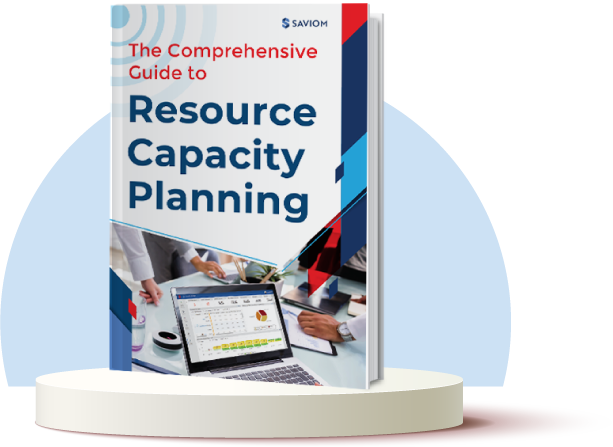Today’s business landscape fosters a multi-project environment wherein employees are allocated to more than one project at a time to keep up with the fast-changing demands. To steer each task or project to fruition, resources need to master the art of multitasking, or else the quality of deliverables can suffer miserably.
Moreover, due to the competitive market and the evolving nature of businesses, multitasking has become an incumbent skill to stay ahead. However, it is easier said than done.
Even the highly skilled and competent workforce may sometimes find it challenging to manage time and balance multiple assignments. Therefore, one needs to hone their time and task management skills before becoming an adept multitasker.
This article discusses the pros and cons of multitasking and the effective ways to leverage it to your advantage.


Let’s begin with understanding,
What is multitasking?
Multitasking refers to the ability to manage several commitments at once by focusing on one task while keeping a tab of activities at the same time. It often involves switching back and forth between tasks and effectively executing multiple endeavors simultaneously in the workplace.
An example of multitasking at work includes handling two projects at different stages of completion simultaneously. Taking down suggestions while doing an important presentation in a meeting is another instance of multitasking.
However, multitasking is often perceived as bad practice as it may disrupt one’s attention span leading to sub-standard quality of work. On the other hand, it can provide umpteen benefits if properly practiced.
The following section sheds light on both sides of the argument,
Is multitasking good or bad?
Multitasking has a lot of advantages. Completing multiple tasks concurrently will ensure faster execution and delivery and increase productivity. Thus, it helps achieve goals within a short period.
An efficient multitasker is good at time management and handling complex projects without stress. They can seamlessly break down complex tasks into smaller ones, prioritize and accomplish them accordingly.
However, if not done efficiently, multitasking can have negative repercussions. Sometimes, as employees may have to juggle multiple activities, they may fail to give undivided attention to the one at hand. This reduced focus may result in more mistakes in their work and cause delays in its completion. In addition, as they may be overwhelmed with the work pressure, leading to burnout and unplanned attrition.
Therefore, it is necessary to effectively sharpen multitasking skills to leverage their benefits and minimize drawbacks.
Here are a few ways you can follow to practice multitasking at your workplace efficiently.
Read More: Importance of skill development in making your workforce future-ready
9 tips for multitasking at the workplace
Honing your multitasking skills is critical when employees want to enhance their efficiency and be up to date with all the tasks and schedules.
Below are some tips employees can implement to achieve the same:
Consolidate and enlist all the tasks to be done
When there are multiple tasks to perform, employees can start by listing every activity. They can do this daily, weekly, or monthly, depending on the nature of the goals, deadlines, and convenience. On the other hand, employees can consolidate their to-do list in three different manners. The monthly list can consist of the long-term goals, the weekly list can include the smaller goals, and the daily list can contain the day-to-day tasks. While documenting this list, employees must also leave room for unexpected work.
After receiving the work schedule, it will help employees get a brief idea of what they have to complete within a particular time frame. Accordingly, they can better prioritize and organize their work and allocate time for each task. In addition, seeing the endeavors all laid out will help them assess the current workload and make informed decisions.
Prioritize all the tasks based on deadlines or value addition
After enlisting all the work for the day, employees need to categorize the tasks based on their importance and urgency. The tasks with tight deadlines must be prioritized and completed promptly. On the other hand, if any project has a great organizational value and is not time-sensitive, employees can create a deadline based on their schedule. This will prevent them from pushing back important projects.
Another method is to order the tasks is based on the effort they demand. If you have an important project that requires effort, it can take precedence over others. The moment the most time-consuming task is over, it can energize you to finish the remaining ones faster. Apart from deadlines and value addition, prioritization is done based on convenience as long as the goals are met.
Read More: 7 Powerful Insights on Sustaining High-Performance Work Teams
Learn the art of delegation
After creating and organizing the to-do list, employees can analyze and see if their peers can take certain tasks based on their availability and capacity. Employees should understand their bandwidth and draw a line beyond which they cannot take more tasks. Therefore, employees can approach a competent team member and assign critical tasks that demand significant effort and acumen.
Delegation allows employees to manage their workload and focus on their work better. It will also help reduce their stress due to overwork, preventing burnout and improving productivity. It also saves time and increases efficiency since employees give undivided attention to the work at hand and the other tasks. Besides, team members feel motivated when trusted with new endeavors, increasing their task ownership.
Group similar tasks together
Focusing on the new task might be challenging if a person switches to something completely different after one task as it will involve some learning curve. As a result, it may take more time to complete the new work than required. The best way to avoid this is to divide the total work into batches of similar tasks.
Doing this will help ensure a smooth transition without reducing focus and attention span. It also allows employees to get into a rhythm and decreases their time on each task. For example, if an employee has to review and edit three projects and start new design work, they can complete the three reviews first and then move on to the design work.
Read More: 7 Best Practices to Eliminate Work Stress and Enhance Productivity
Take periodic breaks to stay focused
Constantly working without breaks will saturate employees, and they will find it more arduous and time-consuming to complete their work. It may also increase the instances of distractions and diversions, affecting their performance and can cause mental fatigue. Hence, it is crucial to take periodic breaks to stay rejuvenated and upkeep focus and energy.
Taking a walk and changing your environment will help reduce strain and stress. Employees can use the Pomodoro technique to manage their work and take sufficient breaks. An employee can break the workday into 25-minute parts separated by five-minute intervals in this method. After about four Pomodoro, they can take an extended break of about 15 to 20 minutes which keeps employees motivated and enhance their work efficiency.
Pay undivided attention to the current task
When you have multiple tasks at hand, giving equal attention to each is natural. However, this will only have adverse effects because you will lose focus on the most critical task at hand. As a result, it will be difficult to finish any work properly within the deadline. Therefore, to avoid it, employees should complete the current priority work with undivided attention and then move on to the next task. They can block time for one task and complete it before moving on to the next one.
Incorporating the 1-3-5 rule into the work routine instead of handling multiple projects simultaneously is an excellent choice. Based on this rule, employees should take one challenging task first, followed by three moderately challenging ones, and finally, five simplest tasks towards the end. Employees can label the tasks as difficult, medium, and simple tasks and follow this rule. It will ensure an easy transition and faster completion without any delay.
Use time and task management tools and techniques for better efficiency
With varied assignments to complete, an employee may find it overwhelming to track and regulate them. They can leverage a task management tool to control and regulate their work. This tool can give them an overview of all the assignments, progress, and deadlines to help them organize their schedule accordingly. Implementing these tools ensure that employees do not miss any important task.
Besides, employees can use time management techniques like the time blocking or Rapid Panning Method (RPM) to increase their productivity. In the time blocking method, employees can divide a day into blocks of time and dedicate each block to one task. In the RPM method, employees can divide their to-do list into three columns. The first column contains the task, the second one includes the purpose of completing the task, and the third column includes the actions required to complete the task. By employing these techniques, the workforce will concentrate better and not procrastinate as they will feel the need to complete the task within the block.
Eliminate distractions at work
Distractions are one of the significant productivity killers at work. When employees are distracted, the work will be error-prone and often delayed. Switching off social media notifications, messages, and personal chats while working can help dedicate more attention and focus on the current work. Additionally, managers can encourage workers to take regular breaks and even set specific lunch and snack times at work.
Employees can also use various apps that will eliminate distractions. For example, Zen mode on mobile phones will freeze your device for a certain amount of time, wherein the usual smartphone functions will not work. This will prevent employees from using their phones. There are also inbuilt features in laptops that will block websites, apps, and notifications. This will help employees refrain from using these apps while working.
Read More: 7 Benefits of Virtual Team Building Activities for Remote Teams
Track your progress at regular intervals
As mentioned earlier, dealing with multiple tasks simultaneously can be stressful. To remain motivated, you can tick off the assignments from your to-do list once you complete them. Reflecting on what you have done and feeling a sense of accomplishment helps boost morale and switch to another work more enthusiastically and energetically.
Employees can use an app or a journal to check their daily accomplishments. For instance, if you are handling a big project, you can break it into chunks of tasks and create a checklist. After completing each task, you should reward yourself for the small achievement. This will help clear your mind and focus on the new task on hand. It also helps prevent employee burnout.
Conclusion
Paul J Meyer, author, and founder of self-improvement company Success Motivation Institute Inc., once said,
“Productivity is the result of a commitment to excellence, intelligent planning, and focused effort.”
As already mentioned, the best way of multitasking is planning and dedicating your maximum effort. With the right multitasking skills, the performance and productivity of individual employees will soar higher.
The above-discussed techniques can help you enhance these skills and manage more assignments efficiently without burnout.
So, have you worked on improving your multitasking skills yet?
The Glossary
Read More: Glossary of Resource Workforce Planning, Scheduling and Management
The SAVIOM Solution
SAVIOM is the market leader in offering the most powerful and configurable solutions for managing enterprise resources efficiently and effectively. Having more than 20 years of experience, this Australian-based MNC has a global presence in over 50 countries. It is also popular with more than 100 customers and helps them achieve their business goals. SAVIOM also has products for project portfolio management, professional service automation, and workforce planning software which can be easily customized as per business requirements









